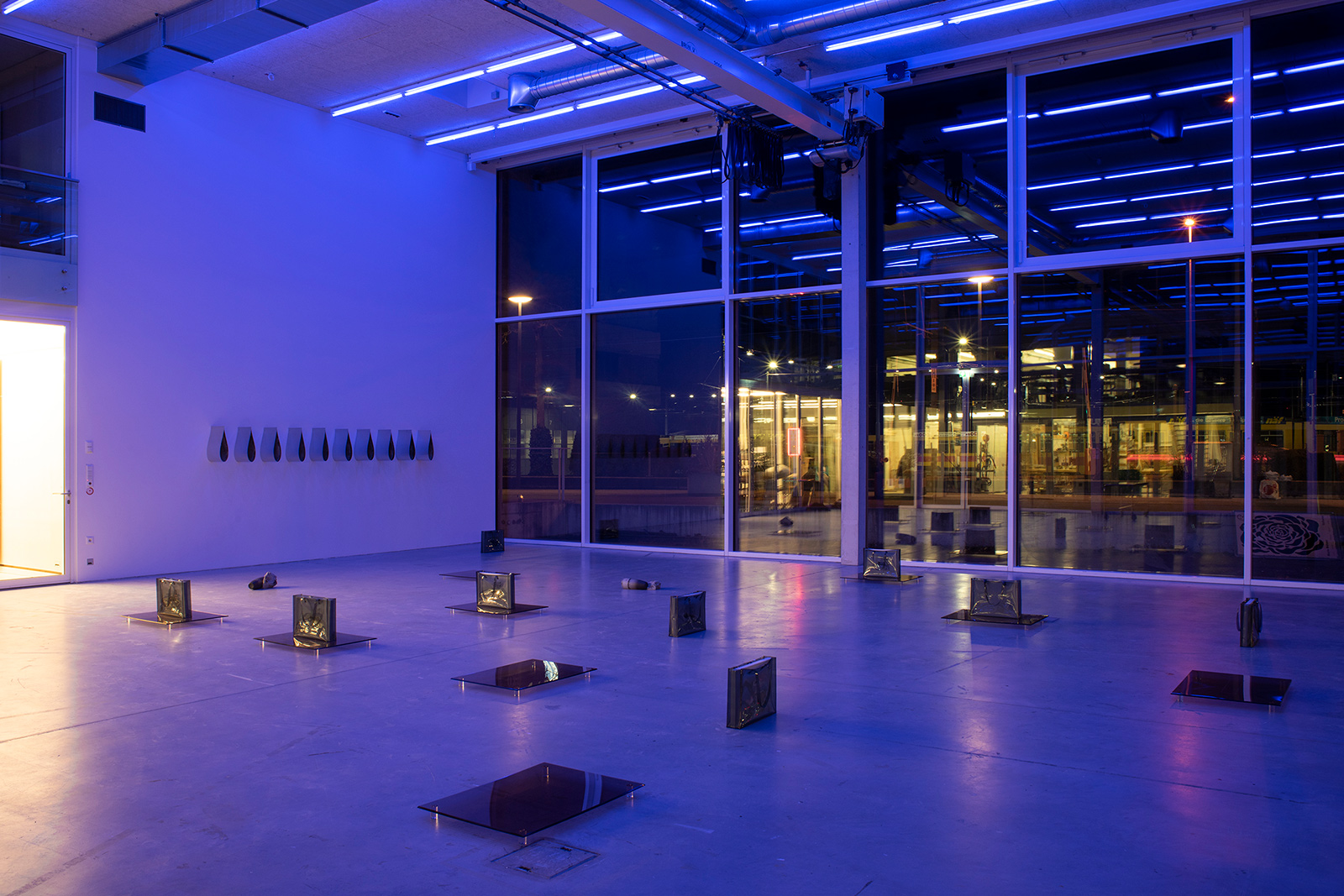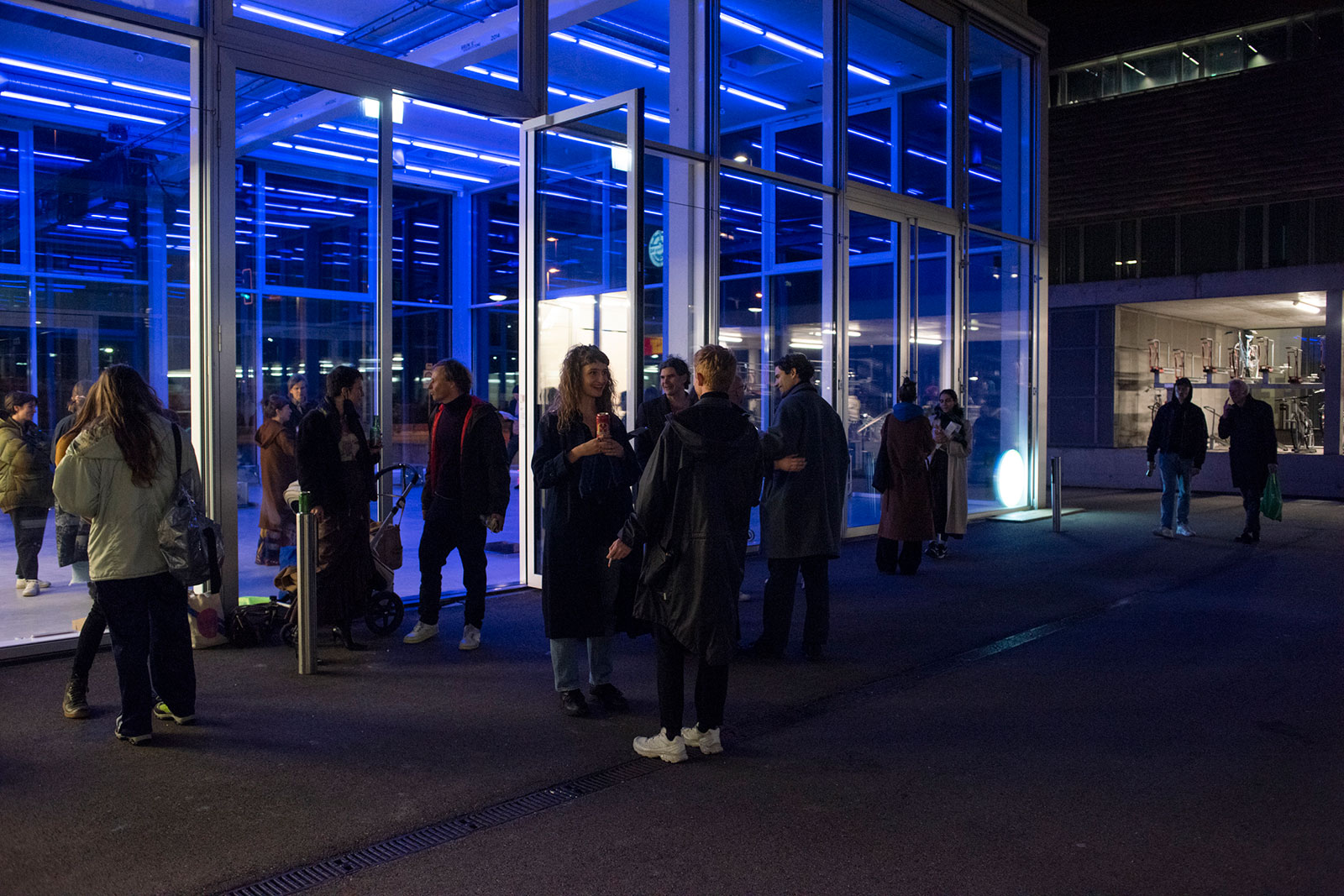The Commissions
Marie Matusz
Vultures
Curated by Roman Kurzmeyer
Opening Friday 18 February 2022, 6 – 8.30 pm
Exhibition 19 – 27 February 2022
Opening hours
Friday, Saturday and Sunday, 6 – 8.30 pm
And by appointment: dertank.hgk@fhnw.ch
Marie Matusz was nominated for the 2020 edition of the Dorothea von Stetten Art Award, alongside Jan Vorisek and Hannah Weinberger. Entitled Until we turn blue, the group of works presented at the Kunstmuseum Bonn on that occasion will now be on view in an expanded form at der TANK in Basel. Very few people were able to visit the Bonn exhibition because it took place during the first phase of the Corona pandemic. It is worth restaging the exhibition in Basel for this reason alone, but it also provides an insight into the artist’s working process: Matusz used the invitation as an opportunity to rework existing pieces and add new ones to the selection exhibited in Bonn. This process-oriented aspect is characteristic of her fluid conception of the artwork and the identity of her work. Marie Matusz’s exhibitions are always precisely choreographed installations that exemplify the artist’s visual thinking and allow the public to share in it. Even though it is visually absent, the exhibition’s thematic core is the human body as a carrier of culture and civilization.
The current → Covid-19 protection concept of the FHNW applies.
The Commissions
Marie Matusz
Vultures
Kuratiert von Roman Kurzmeyer
Eröffnung Freitag 18. Februar 2022, 18:00 – 20:30
Ausstellung 19. – 27. Februar 2022
Öffnungszeiten
Freitag, Samstag und Sonntag, 18:00 – 20:30
Und nach Vereinbarung: dertank.hgk@fhnw.ch
Marie Matusz war neben Jan Vorisek und Hannah Weinberger für den Dorothea von Stetten Kunstpreis 2020 nominiert. Die aus diesem Anlass unter dem Titel Until we turn blue im Kunstmuseum Bonn ausgestellte Gruppe von Arbeiten ist nun in einer erweiterten Form im TANK in Basel zu sehen. Die Bonner Ausstellung wurde kaum wahrgenommen, da sie in die erste Phase der Corona-Pandemie fiel. Die Wiederaufführung der Ausstellung in Basel ist alleine schon deshalb angezeigt, gibt aber darüber hinaus einen Einblick in den Arbeitsprozess der Künstlerin: Marie Matusz nahm die Einladung zum Anlass, bestehende Werke umzuarbeiten und die in Bonn ausgestellte Werkgruppe um neue Arbeiten zu ergänzen. Diese prozessuale Dimension ist kennzeichnend für ihren offenen Kunstwerkbegriff und die Identität ihres Werks. Ausstellungen von Matusz sind stets präzise choreografierte Installationen, die ihr visuelles Denken veranschaulichen und das Publikum daran teilhaben lassen. Inhaltlich im Zentrum, obschon visuell abwesend, steht dabei der Körper des Menschen als Kultur- und Zivilisationsträger.
Es gilt das aktuelle → Covid-19-Schutzkonzept der FHNW.











